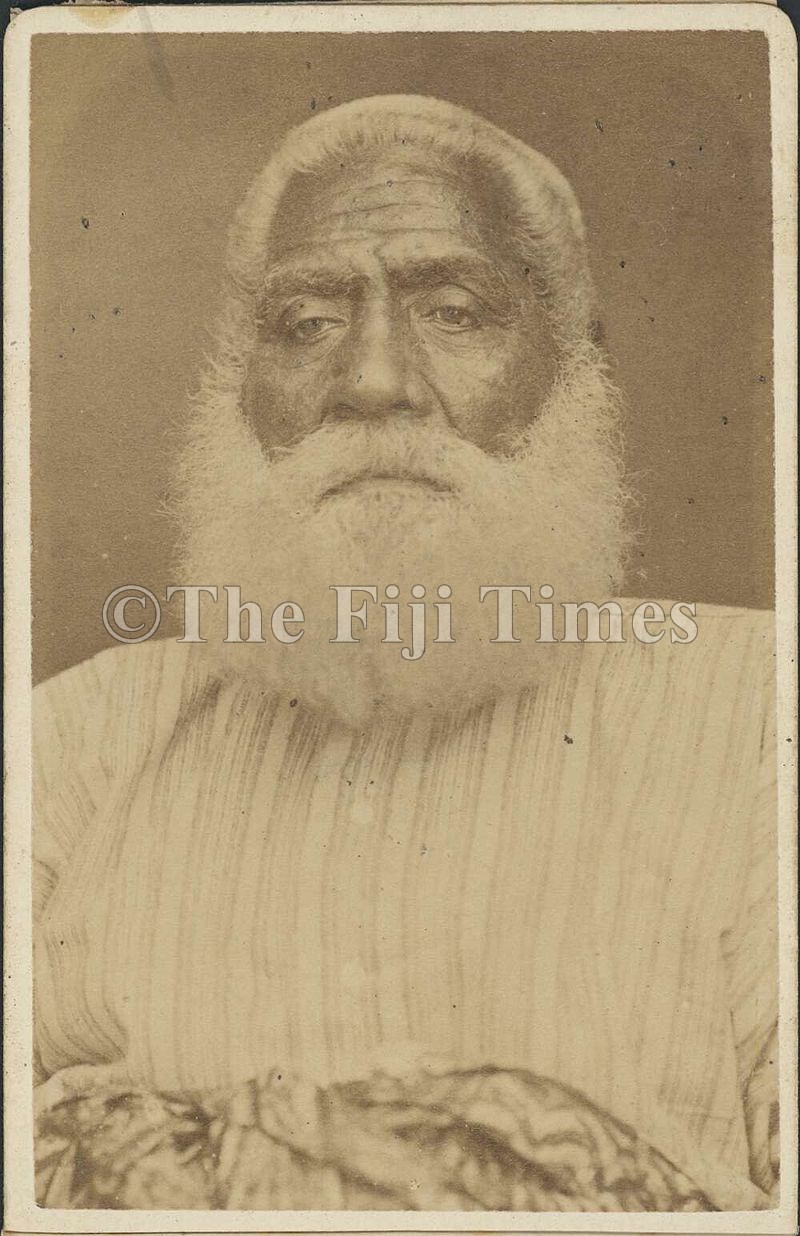Below is a step by step account of the events that took place the day Fiji was ceded to Great Britain. It appeared in The Fiji Times of Monday, September 28, 1874, and October 14, 1957.
The King (Ratu Cakobau) sent a message to His Excellency Sir Hercules Robinson, who was Queen Victoria’s representative and ambassador, saying that the high chiefs and agreed upon the unconditional cession of their country to Her Majesty.
A treat (or deed) of cession was the drawn up in consultation with the King’s advisers, by Mr Innes, who was Attorney-General of New South Wales and was with His Excellency on H.M.S. Pearl. News of what had happened soon spread throughout Levuka, and people confidently expected that the ceremony of raising the British flag would take place on Tuesday, September 29.
They were, however, mistaken. The treaty was ready for signing on the Wednesday, after being copied and translated into Fijian. Some of the high chiefs, who were to sign it, had not yet arrived in Levuka.
Wednesday, September 30, 1874
At 10 o’clock in the morning, His Excellency, Commodore James Goodenough and Mr Innes were received by the King at Nasova.
After words of cordial greeting, His Excellency was seated at the table, with the King on his left and the Commodore on his right.
The Fijian chiefs stood behind the King, and His Excellency’s suite behind the Commodore; Messrs J.B.Thurston, Rupert Ryder, David Wilkinson (interpreter) and Henry Milne (Cakobau’s private secretary) stood near the King’s chair.
After a short friendly conversation between His Excellency and the King, about their proposed visit to Lau, Wilkinson read a letter prepared by the King and high chiefs of Fiji, addressed to Her Majesty The Queen, and given to His Excellency as her ambassador, with the request that he accept in the Queen’s name, the offer of cession which it contained.
The letter was first read in the i-Taukei, which was its original form and afterwards in English as follows:
“Unto Her Majesty Queen of Britain:-
We, King of Fiji, together with other high Chiefs of Fiji hereby give our country, Fiji, unreservedly to Her Brittanic Majesty Queen of Great Britain and Ireland; and we trust and repose fully in her, that she will rule Fiji justly and affectionately, that we may continue to live in peace and prosperity.
As we, desiring these conferences may terminate well and satisfactorily, request Her Britannic Majesty’s Ambassador unto us, Sir Hercules George Robert Robinson, will confer with our advisers who have our confidence in these matters.”
The letter was signed by Cakobau and contained the name of his chief interpreter, D.Wilkinson.
His Excellency replied, through the interpreter, “In the name of Her Majesty The Queen I accept the cession of these islands in the same spirit in which it is offered.”
When this was interpreted to him, the King bowed in reply.
His Excellency then said to Wilkinson, “Will you say also that, in what he has done I think the King has acted as a great chief, consulting only the interests of the inhabitants of these islands; and further, that I wish Fiji all possible prosperity — prosperity to the country and peace and happiness to her people”.
The King bowed in acknowledgement as before.
The Deed of Cession, engrossed on parchment and with seals affixed, was then read in English and in i-Taukei languages, by Wilkinson.
The King signed first, his signature being written for him in his presence and at his direction by Henry Milne, his private secretary.
At the desire of His Excellency and Mr Innes, the precise effect of his signing was explained to the King by Mr Milne.
Having signed, the King placed his hand upon the seal and said, “I deliver this as my act of deed”.
Four other chiefs then signed the deed: Ratu Epeli Nailatikau, Vakawalitabua (Tui Bua), Savenaca Naulivou and Esekeli Taba.
His Excellency did not sign at this time, reserving his signature until the remaining high chiefs had signed.
The King then presented to His Excellency four large turtles which were on his canoe, the first magiti to the Government of Great Britain.
His Excellency smilingly accepted the gift, and then returned with his suite to the warships, Pearl and Dido, lying in the harbour.
Shortly after one o’clock the Pearl left for Lomaloma, Lau and at 4 pm the Dido followed, having Cakobau, Ratu Josefa Celua and Mr Layard (the British Consul) on board.
NEXT WEEK: To be continued




